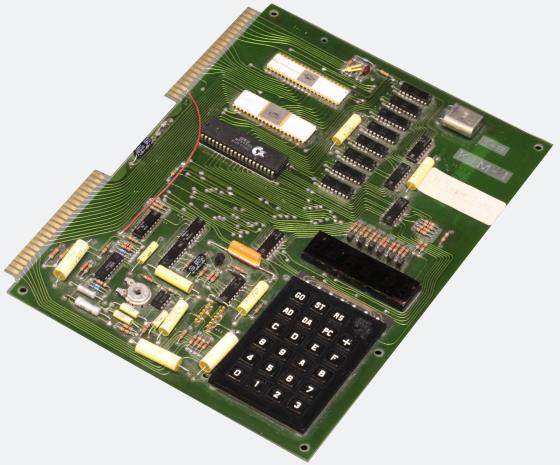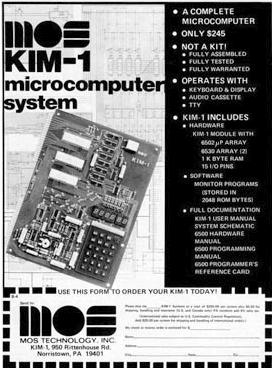
The MOS KIM-1 was a single board computer created by MOS Technology in 1976. The acronym KIM stood for Keyboard Input Monitor, which I’m sure their marketing department spent a good few seconds coming up with. The MOS-1 was developed out of MOS Technologies need to build a processor that couldn’t be plugged into existing Motorola motherboards, as Motorola where suing them for previously producing a processor that did just that. With a capable processor but no available motherboard to use, an electrical engineer at MOS called Chuck Peddle designed what we now know as the KIM-1.
The MOS KIM-1 was able to establish itself well in the market and built up a loyal following of hobbyists due to its cheap price point. The system was initially intended as a training and development tool to allow engineers to become accustomed with the new CPU used for industrial applications. The system came fully assembled and housed a large operating system; this allowed the KIM-1 to be directly attached to a Teletype like the ASR-33 or to terminals like the ADM-3. By adding a cassette tape drive the user would have a complete system for creating programs.

Most hobbyists purchased the system to hone their skills in developing programs written in Assembly language. This spawned the creation of numerous books on the subject with different programs listed for turning the KIM-1 into a variety of different tools. One popular book was by Jim Butterfield, it was titled as ‘The First Book of KIM’ which allowed the programmer access to fully understanding the capabilities of the machine. The book detailed programs with code and then explanations of what the lines of code meant and how they produced the resultant effect. Programs ranged from simple recreational games and educational programs to full blown diagnostic and utility programs designed to make the KIM-1 a more powerful machine.
Over time the KIM-1 kept growing in popularity and saw rise to a series of changes through both its hardware and software. There where additional RAM chips available to increase the systems available memory, this allowed for more complex procedures to take place on the KIM-1. One of the benefits of the additional RAM was to allow the introduction of the Tiny BASIC programming language as a platform for the microcomputer. Although the BASIC program was hampered by the fact it had to load onto the system through the cassette tape drive and could take up to 20 minutes to load.
The KIM-1 consisted of a single printed circuit board, with three main integrated circuits, a MCS6502 CPU and two MCS6530 peripheral memory devices. It also housed six 7-segmented LEDs and 24-key keypad. A short while into the KIM-1’s lifetime its parent company MOS Technology was bought out by Commodore who continued production of the unit in its original form for a little while. The KIM-1’s original designer Chuck Peddle began work on a newer version that retained the core abilities of the processor but with the additions of a full keyboard, monitor and cassette drive.


